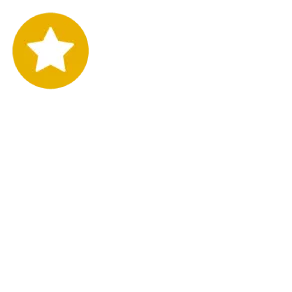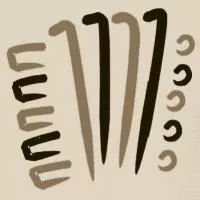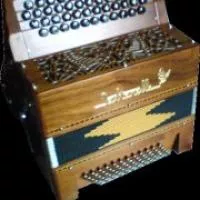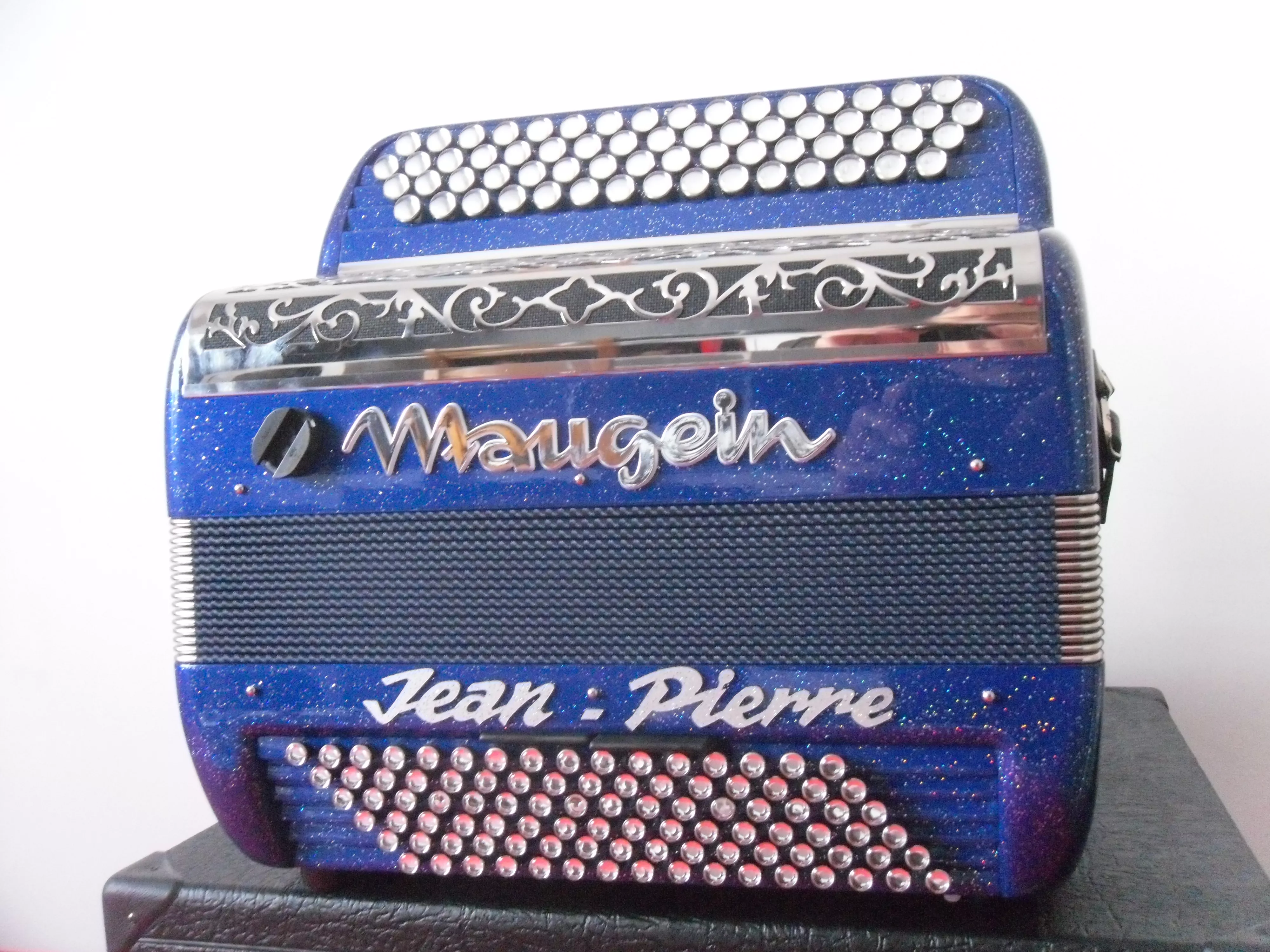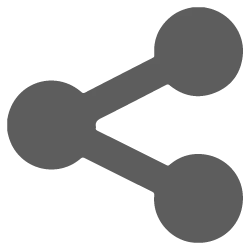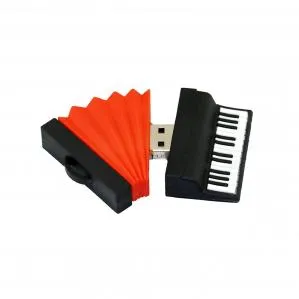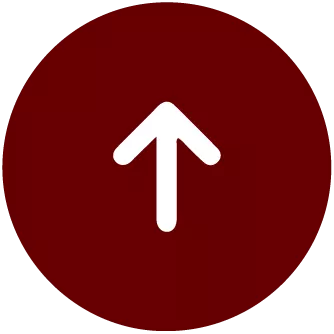Hello,
Can someone explain this to me:
We have dotted minims with a sixteenth note staff ???? I understand that it fits in three beats but that's all! Thank you for your clarifications!
Can someone explain this to me:
We have dotted minims with a sixteenth note staff ???? I understand that it fits in three beats but that's all! Thank you for your clarifications!
EgoMe
10/01/2016
Good morning,
see (Abb. 27-2): http://www.mu-sig.de/Theorie/Notation/Notation08.htm
Hi
see (Abb. 27-2): http://www.mu-sig.de/Theorie/Notation/Notation08.htm
Hi
survoje
10/01/2016
Good thing I have Google Translate :)
Thanks anyway!
so I went to Wikipedia for the explanation!https://fr.wikipedia.org/wiki/Trémolo#Notation
Thanks anyway!
so I went to Wikipedia for the explanation!https://fr.wikipedia.org/wiki/Trémolo#Notation
jphf51
10/01/2016
Hello,
This rhythmic figure from "return of the swallows" indicates that you have to execute on the duration of the note figure (here a dotted crescent) sixteenth notes by alternating the high note and the low note : Fa-la in sixteenth note during 3 beats (Waltz),
You can find this writing in a lot of classical pieces too.
Remark : you can execute this rhythmic figure at will on long notes to give this kind of vibrato to imitate for example mandolins and other strings (sirtaki, for example), attention it is not a trill where the execution is almost similar but on a gap of 1/2 tone only, in your example it is generally a gap of sixth or third (major or minor depending on the key of the piece)
Sincerely
This rhythmic figure from "return of the swallows" indicates that you have to execute on the duration of the note figure (here a dotted crescent) sixteenth notes by alternating the high note and the low note : Fa-la in sixteenth note during 3 beats (Waltz),
You can find this writing in a lot of classical pieces too.
Remark : you can execute this rhythmic figure at will on long notes to give this kind of vibrato to imitate for example mandolins and other strings (sirtaki, for example), attention it is not a trill where the execution is almost similar but on a gap of 1/2 tone only, in your example it is generally a gap of sixth or third (major or minor depending on the key of the piece)
Sincerely
survoje
10/01/2016
First excuse for not quoting the excerpt, indeed it's from the "return of the swallows"!
Thank you for this clear explanation of a very technical thing!
Sincerely
Thank you for this clear explanation of a very technical thing!
Sincerely
survoje
11/01/2016
So this is just a simplification-convention of the writing?
The first measure of the example should be written like that ?
and that's how it's done! :)
The first measure of the example should be written like that ?
and that's how it's done! :)
jphf51
11/01/2016
Re-
Indeed it avoids to fill measures with marked notes, attention in your example there is a very small error, there must be only 12 sixteenth notes per measure and not 24 for 3 beats (4 sixteenths per beat).
But for the technical realization if you want to be VERY respectful of the musical convention you do what is written but for my part I never counted the number of notes in my tremolos !!! I do as I can (I don't have a great technique and I can't go very fast), when I'm on stage I'm not competing for the world championships !!!! and my dancer friends don't ask themselves if there were 12 sixteenth notes in tremolo in The Return of the Swallows !!!!
Sincerely
Indeed it avoids to fill measures with marked notes, attention in your example there is a very small error, there must be only 12 sixteenth notes per measure and not 24 for 3 beats (4 sixteenths per beat).
But for the technical realization if you want to be VERY respectful of the musical convention you do what is written but for my part I never counted the number of notes in my tremolos !!! I do as I can (I don't have a great technique and I can't go very fast), when I'm on stage I'm not competing for the world championships !!!! and my dancer friends don't ask themselves if there were 12 sixteenth notes in tremolo in The Return of the Swallows !!!!
Sincerely
survoje
11/01/2016
At first it was just a question about a piece of music writing that I had never seen before.
I learned something! Thank you very much and good luck!
I learned something! Thank you very much and good luck!
jphf51
11/01/2016
But that's exactly what the SUPER FORUM of P.A. is for, we are a big community and everybody has his place to ask all the questions for which he doesn't have the answer and those who know and have a great pleasure to share their knowledge.
Sincerely to all
Jean-Pierre
Sincerely to all
Jean-Pierre
survoje
12/01/2016
I thought I was done with this subject :)
if I want to replace for reasons of lack of technicality, I can "advantageously", implied musically even if it sounds less "rich", by this which is found elsewhere on the score?
Personally, I would think that maybe yes, but I prefer the opinion of someone who plays it (the sixteenth-note tremolo!!!). Or would it not be the same?
Sincerely
if I want to replace for reasons of lack of technicality, I can "advantageously", implied musically even if it sounds less "rich", by this which is found elsewhere on the score?
Personally, I would think that maybe yes, but I prefer the opinion of someone who plays it (the sixteenth-note tremolo!!!). Or would it not be the same?
Sincerely
jphf51
12/01/2016
Re-
It is not quite the same thing, this musical passage is more a variation on a theme where the first note is the melodic line (that we accentuate in general to make it stand out)
we can play the theme then first variation in eighth notes and then 2nd variation in triplets of eighth notes (as in return of the swallows) then for the extra strong in 3rd variation with 4 sixteenth notes
If you know the java CA GAZE, you have a nice example of this kind of variations in the three rhythms (eighth note, triplet-eighth note, sixteenth note) in the TRIO in D major.
To come back to the tremolos, while waiting to be able to play them regularly (and in the tempo!!!) it is better to replace them by "plated" chords of 2 or 3 notes respecting the keys and if your accordion has a full musette register, use it by playing the passage to the higher octave: guaranteed effect!!!
It is not quite the same thing, this musical passage is more a variation on a theme where the first note is the melodic line (that we accentuate in general to make it stand out)
we can play the theme then first variation in eighth notes and then 2nd variation in triplets of eighth notes (as in return of the swallows) then for the extra strong in 3rd variation with 4 sixteenth notes
If you know the java CA GAZE, you have a nice example of this kind of variations in the three rhythms (eighth note, triplet-eighth note, sixteenth note) in the TRIO in D major.
To come back to the tremolos, while waiting to be able to play them regularly (and in the tempo!!!) it is better to replace them by "plated" chords of 2 or 3 notes respecting the keys and if your accordion has a full musette register, use it by playing the passage to the higher octave: guaranteed effect!!!
survoje
12/01/2016
"It's a blast"... mind-blowing!!!
I'm carefully copying your method tip into my music notebook if I ever venture into those accordion high places!
Thanks to you, I understand how it looks on paper :)
It's hard (I'm a pessimist :)) that one day it will reach my fingertips but it will always be so pleasant to listen to!
Thanks again for your explanations!
I'm carefully copying your method tip into my music notebook if I ever venture into those accordion high places!
Thanks to you, I understand how it looks on paper :)
It's hard (I'm a pessimist :)) that one day it will reach my fingertips but it will always be so pleasant to listen to!
Thanks again for your explanations!
jphf51
12/01/2016
Thank you for your message, but I am also only a modest amateur accordionist, there are still many things that I can't play (the 3rd variation of CA GAZE, not for me either!!) but when you know how others do it, it makes you want to stick to it. For the moment your level does not allow you to play all these scores but keep the hope by working that one day you will say ... but it was not more difficult than that ....
I remain at your disposal to enlighten you (within the limits of my knowledge) and do not hesitate to ask your questions on the forum, we are here to help each other.
Continue to enjoy your accordion (which is very beautiful on the picture)
J-Pierre
I remain at your disposal to enlighten you (within the limits of my knowledge) and do not hesitate to ask your questions on the forum, we are here to help each other.
Continue to enjoy your accordion (which is very beautiful on the picture)
J-Pierre
survoje
14/01/2016
The accordion? a small saltarelle 60 basses! We get along well :)
I have more questions waiting, thanks to the forum!
SincerelyGérard
I have more questions waiting, thanks to the forum!
SincerelyGérard
Hello !
can we transform a 6/8 score into 3/4?
- theoretically ? is it acceptable by the "purists" ?
- practically ? does it give the same thing when played ? the 3/4 tempo being 2x the 6/8 ?
Are these 2 transcriptions below "equivalent" ?
the goal would be to "simplify" a score...
Thanks
can we transform a 6/8 score into 3/4?
- theoretically ? is it acceptable by the "purists" ?
- practically ? does it give the same thing when played ? the 3/4 tempo being 2x the 6/8 ?
Are these 2 transcriptions below "equivalent" ?
the goal would be to "simplify" a score...
Thanks
levinceret
09/01/2016
Hello,
No it's not the same!
The 6/8 measure is a measure in 2 beats which are divisible by 3 (so we say that it is a ternary rhythm).
The 3/4 measure is a measure in 3 beats divisible by 2 (so we say it's a binary rhythm).
To make it simple: a piece in 6/8 will be danced like a march, while a piece in 3/4 will be danced like a waltz.
When interpreting, pay attention to the strong beats (for 3/4 the strong beats are on the first beat, while in 6/8 the strong beats are on the first eighth note and on the fourth eighth note)
So, per bar, only one strong beat for the 3/4 and two strong beats for the 6/8.
The two examples are therefore completely different.
Sincerely
No it's not the same!
The 6/8 measure is a measure in 2 beats which are divisible by 3 (so we say that it is a ternary rhythm).
The 3/4 measure is a measure in 3 beats divisible by 2 (so we say it's a binary rhythm).
To make it simple: a piece in 6/8 will be danced like a march, while a piece in 3/4 will be danced like a waltz.
When interpreting, pay attention to the strong beats (for 3/4 the strong beats are on the first beat, while in 6/8 the strong beats are on the first eighth note and on the fourth eighth note)
So, per bar, only one strong beat for the 3/4 and two strong beats for the 6/8.
The two examples are therefore completely different.
Sincerely
survoje
09/01/2016
Thanks for the quick answer!
I had more or less understood that when we have the left hand on the accordion : bass_noire ---- eighth note - bass_noire --- eighth note | bass_noire --- eighth note bass_noire --- eighth note ....
but on this example (Tiersen's Waltz of the monsters), we have a "regular" accompaniment 1 - 2 - 3 :
eighth note - eighth note - eighth note - eighth note - eighth note...
Isn't it the same as "bass_black - quarter - black" with a different tempo?
On the youtube example of this waltz (?) you can count 1 - 2 - 3, certainly quickly!
Sincerely
I had more or less understood that when we have the left hand on the accordion : bass_noire ---- eighth note - bass_noire --- eighth note | bass_noire --- eighth note bass_noire --- eighth note ....
but on this example (Tiersen's Waltz of the monsters), we have a "regular" accompaniment 1 - 2 - 3 :
eighth note - eighth note - eighth note - eighth note - eighth note...
Isn't it the same as "bass_black - quarter - black" with a different tempo?
On the youtube example of this waltz (?) you can count 1 - 2 - 3, certainly quickly!
Sincerely
levinceret
09/01/2016
Hello,
In fact the waltz of the monsters is a waltz in 3/4
If you write it in 6/8 it becomes a march and not a waltz.
There is a very telling example:
The return of the swallows which is a waltz in 3/4 which is also played in 6/8, but this changes the piece completely.
Many accordionists finish this waltz in march.
Besides, you can play all waltzes in 6/8, but I don't see the point.
To conclude, writing in 3/4 means that it is a waltz while writing in 6/8 means that it is a march or a tarantella for example.
What is important is what a measure contains. In both examples the measures are not identical, so the interpretation is completely different.
Sincerely
NB: I'm looking for the return of the swallows with the two versions I've already seen on the net. If I get my hands on it again, I will post it.
In fact the waltz of the monsters is a waltz in 3/4
If you write it in 6/8 it becomes a march and not a waltz.
There is a very telling example:
The return of the swallows which is a waltz in 3/4 which is also played in 6/8, but this changes the piece completely.
Many accordionists finish this waltz in march.
Besides, you can play all waltzes in 6/8, but I don't see the point.
To conclude, writing in 3/4 means that it is a waltz while writing in 6/8 means that it is a march or a tarantella for example.
What is important is what a measure contains. In both examples the measures are not identical, so the interpretation is completely different.
Sincerely
NB: I'm looking for the return of the swallows with the two versions I've already seen on the net. If I get my hands on it again, I will post it.
survoje
09/01/2016
Thanks levinceret for your explanations!
Should I conclude that the score in 6/8 does not in fact correspond to the youtube piece?
I will look for versions of "return of the swallows" and try to pay attention to the listening!
Should I conclude that the score in 6/8 does not in fact correspond to the youtube piece?
I will look for versions of "return of the swallows" and try to pay attention to the listening!
levinceret
09/01/2016
Here is a tarantella that is written in 6/8. When you listen to it, it has nothing to do with a waltz. Normal because it is on a two-beat basis, as explained above.
survoje
09/01/2016
Now I can hear that it's not a 3/4.
I have to find a 6/8 piece, played in 3/4 to see the difference!
If I summarize, the piece of Tiersen put above is not in 6/8, it is 3/4 fast ?
I have to find a 6/8 piece, played in 3/4 to see the difference!
If I summarize, the piece of Tiersen put above is not in 6/8, it is 3/4 fast ?
jphf51
10/01/2016
Hello to all I allow myself just a small remark, on the rhythmic and "solfeggic" plan of the thing I agree entirely with you but let us take the case of the measure in 12/8 which is a ternary measure with 4 beats, this measure was very used in the Sixties for the slows-rocks. If you play for example the famous theme of Doctor Zhivago: "One day Lara" this piece is written in 12/8 and it is a slow-rock but diffuse this title on a dance floor and you will see very many dancers (at least the oldest) turning in waltz.Just to say: for us purists 6/8 or 12/8 and 3/4, nothing to see (accentuation of the strong time, rhythmic) but for the dancers many will not make the difference and you will be able to play very well a melody 6/8 or 12/8 in Waltz. Another example I invite you to listen to "LE CAFE DES 3 COLOMBES" of Joe Dassin Question: Waltz or Slow (12/8 or 3/4 ??)
Sincerely yours, Jean-Pierre
Sincerely yours, Jean-Pierre
survoje
10/01/2016
Thanks for the example of the "Café des Trois Colombes" on which I could hear the difference!
And I understand a little better the subtlety of it all!
Sincerely
Gérard
And I understand a little better the subtlety of it all!
Sincerely
Gérard
Good evening,
I'm sometimes a little confused to read the notes on the staff and at the same time to look for the fingering above or below... the right hand, the left hand... bad working method surely !
So, as it annoys me (just for fun!), I had fun to fiddle with my music software to put the fingering in the place of the notes...
And as I don't know if it's interesting, I submit it to you for your opinion :)
a little example from the blue Ferrero method (there are 2-3 input errors!):
I will enter a "more difficult" score (if you know one where the fingering has been indicated by a pro!) to see this "tablature" is operative!
Gérard
I'm sometimes a little confused to read the notes on the staff and at the same time to look for the fingering above or below... the right hand, the left hand... bad working method surely !
So, as it annoys me (just for fun!), I had fun to fiddle with my music software to put the fingering in the place of the notes...
And as I don't know if it's interesting, I submit it to you for your opinion :)
a little example from the blue Ferrero method (there are 2-3 input errors!):
I will enter a "more difficult" score (if you know one where the fingering has been indicated by a pro!) to see this "tablature" is operative!
Gérard
Hi, survoje
Is it really clearer?
It is necessary to read the numbers of the fingers MD, 1st line of the first systemthe name of the notes in French below 2nd lineand that of the chords in English... between the linesand as I sing it would be necessary to still add the words...
otherwise ... (I try to imagine for a duet sung by a couple ...)
I think that it takes a little moment of adaptation to imagine the notes...
Is it really clearer?
It is necessary to read the numbers of the fingers MD, 1st line of the first systemthe name of the notes in French below 2nd lineand that of the chords in English... between the linesand as I sing it would be necessary to still add the words...
otherwise ... (I try to imagine for a duet sung by a couple ...)
I think that it takes a little moment of adaptation to imagine the notes...
survoje
22/12/2014
Hi jmimi and thanks for your comments!
Ok for the MG which is a mess ! at first, I didn't want to put it... The little interest was for the bass melodies.
And if we only stick to the MD?
I'll post another example, while I realize it...
Do you have a song on the site that I could "study" according to your remarks, a score where there would be the accordion part... I also do accordion-singing, so it could be of interest to me in two ways!
Gérard
Ok for the MG which is a mess ! at first, I didn't want to put it... The little interest was for the bass melodies.
And if we only stick to the MD?
I'll post another example, while I realize it...
Do you have a song on the site that I could "study" according to your remarks, a score where there would be the accordion part... I also do accordion-singing, so it could be of interest to me in two ways!
Gérard
theo
22/12/2014
Hello overhead
Please take this message as an opinion, not a criticism
Your "score" can only be played by an accordionist who uses the same fingering as you (thumb 1) I use the thumb in 0, for me it is finished. In the first measure you have to think that the 2 is the note E. As I am thumb 0 my fingering is less 1So my 2 ... it's an E......., I say to myself it's written 2 = then finger 1.
Not obvious because in measure 5 the 2 is a D.
Imagine that you make a duet, you give your score to another musician !!!! and this musician gives you the same score written with the notes
I learned accordion and solfeggio with this method, now on a score (no matter the instrument) when I see a C or a C I play C not a 2, a 3 or a 5.
A bit of humor to finish (because I like it and I'm not the only one here) Unless you write scores for telephone dials, I think you're going to a lot of trouble for nothing
Regards to all and to all
Theo
Please take this message as an opinion, not a criticism
Your "score" can only be played by an accordionist who uses the same fingering as you (thumb 1) I use the thumb in 0, for me it is finished. In the first measure you have to think that the 2 is the note E. As I am thumb 0 my fingering is less 1So my 2 ... it's an E......., I say to myself it's written 2 = then finger 1.
Not obvious because in measure 5 the 2 is a D.
Imagine that you make a duet, you give your score to another musician !!!! and this musician gives you the same score written with the notes
I learned accordion and solfeggio with this method, now on a score (no matter the instrument) when I see a C or a C I play C not a 2, a 3 or a 5.
A bit of humor to finish (because I like it and I'm not the only one here) Unless you write scores for telephone dials, I think you're going to a lot of trouble for nothing
Regards to all and to all
Theo
survoje
22/12/2014
Thank you Theo for your answer!
I'm learning on my own and sometimes I wish things were clearer on the methods. For idea, from "Ferrero 1st year" page 58...
wow, I'm getting cold feet just looking at it! If I zoom in on a measurement....
I say to myself "can I make it clearer... for me !". hence this idea of a kind of "tablature"...(with a typing error !)
and to have fun, to test, the beginning of a Ferrero recreation "upper course" MD... By the way, the "1" in finger 1, I did not invent it, I stole it from Ferrero, so it is guaranteed...
I had a certain joy to succeed in this challenge (to put the fingerings in the place of the notes) thanks to a forumer by the way, to go in the "heart" of an indisputable software of scores (Lilypond)!
Even if some ideas may seem like dead ends at some point, it's worth trying them! Computers allow us to do many things. This idea can also evolve... or not... That said, I didn't work only for the "telephone dials" because now I have the possibility to clear up the tricky parts...
I would also like the opinion of a beginner (not conditioned by his training ...), knowing how to read music and knowing the place of the notes on the keyboard ... not easy !
Sincerely
Gérard
I'm learning on my own and sometimes I wish things were clearer on the methods. For idea, from "Ferrero 1st year" page 58...
wow, I'm getting cold feet just looking at it! If I zoom in on a measurement....
I say to myself "can I make it clearer... for me !". hence this idea of a kind of "tablature"...(with a typing error !)
and to have fun, to test, the beginning of a Ferrero recreation "upper course" MD... By the way, the "1" in finger 1, I did not invent it, I stole it from Ferrero, so it is guaranteed...
I had a certain joy to succeed in this challenge (to put the fingerings in the place of the notes) thanks to a forumer by the way, to go in the "heart" of an indisputable software of scores (Lilypond)!
Even if some ideas may seem like dead ends at some point, it's worth trying them! Computers allow us to do many things. This idea can also evolve... or not... That said, I didn't work only for the "telephone dials" because now I have the possibility to clear up the tricky parts...
I would also like the opinion of a beginner (not conditioned by his training ...), knowing how to read music and knowing the place of the notes on the keyboard ... not easy !
Sincerely
Gérard
jurachromatique
23/12/2014
Hello survoje, your idea is ingenious, but it will take you a lot of time, and if you get used to it, you will lose efficiency in pure reading, of course, fingering for an accordionist often requires patience and a certain amount of headache, but believe in my experience, if you have a good level of reading, fingering will be much easier, because you will concentrate on your fingers, and not on the note. Finally, I hope you are not too disappointed by our remarks, good luck, and happy holidays ....Jurachromatique
lucdelor
23/12/2014
Hello musician friendsSurvoje
If you want to master the fingering, why not take a few lessons from a teacher or an accordeonist, you say you are a beginner and you are already in a superior course method.use the first method, work page by page choose the fingering that suits you, for the other fingerings that you do not use (a bit of blanco) and it's hidden.by working this way you will master the fingering, the reading and the ability to play all the scores.
Imagine a child in first grade who can't read but wants to do sixth grade homework,
Now if your tablature suits you why not but it will be difficult for you to share and the purpose of music is sharing.
Love
Luc.
If you want to master the fingering, why not take a few lessons from a teacher or an accordeonist, you say you are a beginner and you are already in a superior course method.use the first method, work page by page choose the fingering that suits you, for the other fingerings that you do not use (a bit of blanco) and it's hidden.by working this way you will master the fingering, the reading and the ability to play all the scores.
Imagine a child in first grade who can't read but wants to do sixth grade homework,
Now if your tablature suits you why not but it will be difficult for you to share and the purpose of music is sharing.
Love
Luc.
survoje
23/12/2014
Hello,
I didn't say that I was a fan of the "upper course". I just happen to have it in the back of a box and the idea came to me to test, to have fun, to grab the 1st MD line from the 1st recess. I was just having fun with it. I just specified the "upper course" to cite the source of this excerpt... I didn't say I wanted to make it a method, let alone a system of exchange with other musicians! It's true that at the beginning I put a whole score but it was just to "show off". I don't intend to retype all the scores that are lying around!
The idea is more to clarify a tricky passage, one, two, three bars, and again... for oneself, an aid to deciphering.
It can be seen as a gadget for someone who struggles...
Personally, it works... "tricky" passages become easier. And for the rest, it's the same as always!
SincerelyGérard
I didn't say that I was a fan of the "upper course". I just happen to have it in the back of a box and the idea came to me to test, to have fun, to grab the 1st MD line from the 1st recess. I was just having fun with it. I just specified the "upper course" to cite the source of this excerpt... I didn't say I wanted to make it a method, let alone a system of exchange with other musicians! It's true that at the beginning I put a whole score but it was just to "show off". I don't intend to retype all the scores that are lying around!
The idea is more to clarify a tricky passage, one, two, three bars, and again... for oneself, an aid to deciphering.
It can be seen as a gadget for someone who struggles...
Personally, it works... "tricky" passages become easier. And for the rest, it's the same as always!
SincerelyGérard
Evi-Danse
25/12/2014
Hello and Merry Christmas to all
Why not, each to his own, it's the result that counts. In this notation I have trouble seeing how one can differentiate a quarter note from a white or a round.
Good music
Why not, each to his own, it's the result that counts. In this notation I have trouble seeing how one can differentiate a quarter note from a white or a round.
Good music
How many #'s in the frame for a piece in F#? Or flats for a piece in G#?
Nothing is easier to find on a standard MG Basses keyboard! If necessary, use a diagram of the MG keyboard.
- the #'s for a major scale : you start from the fundamental bass C and while going up you count... G=1, RE=2, A=3... F#=6...
- the flats for a major scale : you always start from the fundamental bass C and while going down, you count... FA=1, SIb=2... REb=5...
For minor scales, same thing but starting from the complementary bass A. By going up the sharps, by going down the flats. Normally, it gives F#m=3#, Fm=4flats...Gm=2...
It also works by reversing the problem... I have 3 sharp notes in my quilting... 1, 2, 3... I am in the key of A or F#m depending on whether I start from C or A!
Sincerely
Nothing is easier to find on a standard MG Basses keyboard! If necessary, use a diagram of the MG keyboard.
- the #'s for a major scale : you start from the fundamental bass C and while going up you count... G=1, RE=2, A=3... F#=6...
- the flats for a major scale : you always start from the fundamental bass C and while going down, you count... FA=1, SIb=2... REb=5...
For minor scales, same thing but starting from the complementary bass A. By going up the sharps, by going down the flats. Normally, it gives F#m=3#, Fm=4flats...Gm=2...
It also works by reversing the problem... I have 3 sharp notes in my quilting... 1, 2, 3... I am in the key of A or F#m depending on whether I start from C or A!
Sincerely






















